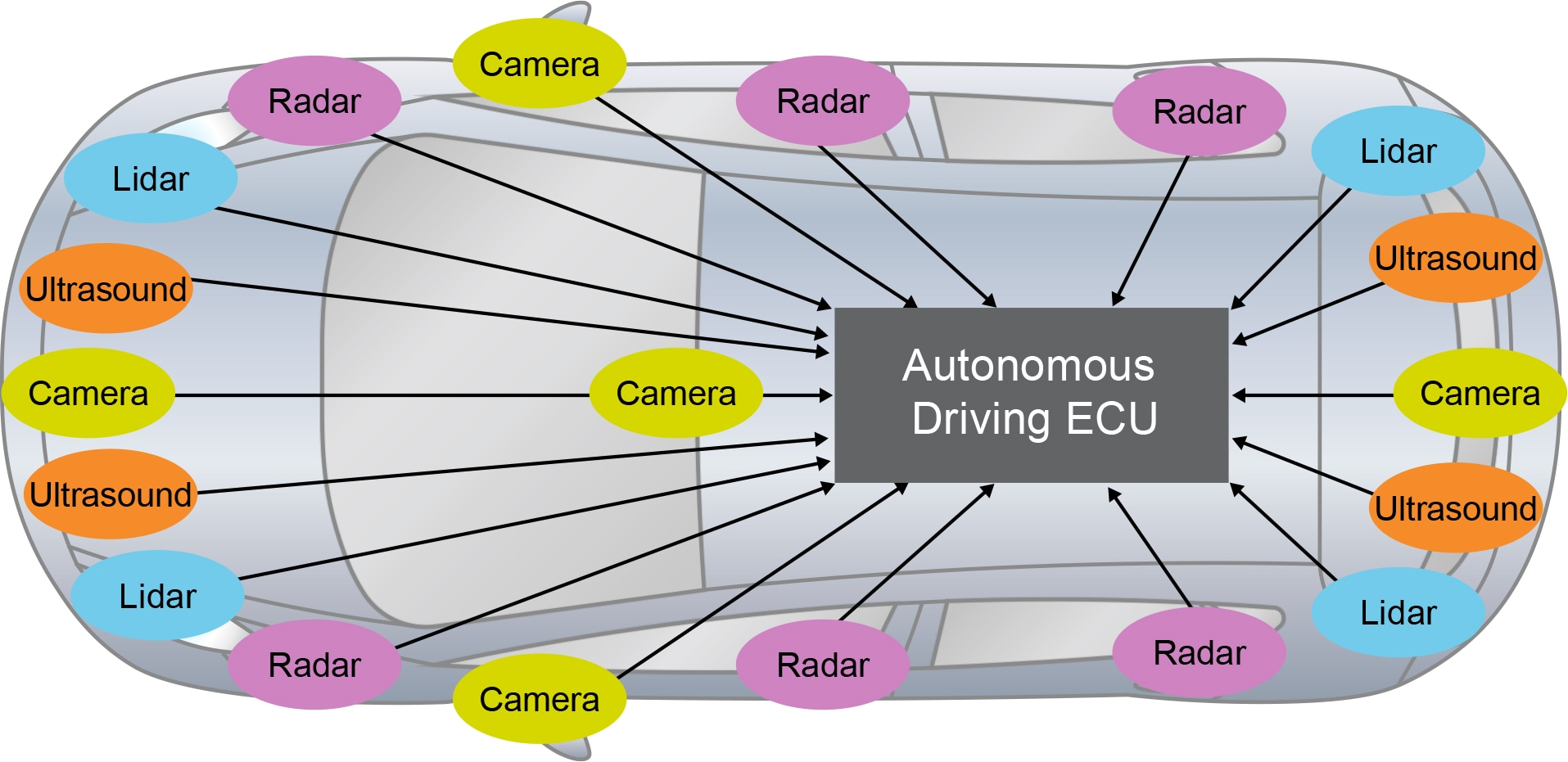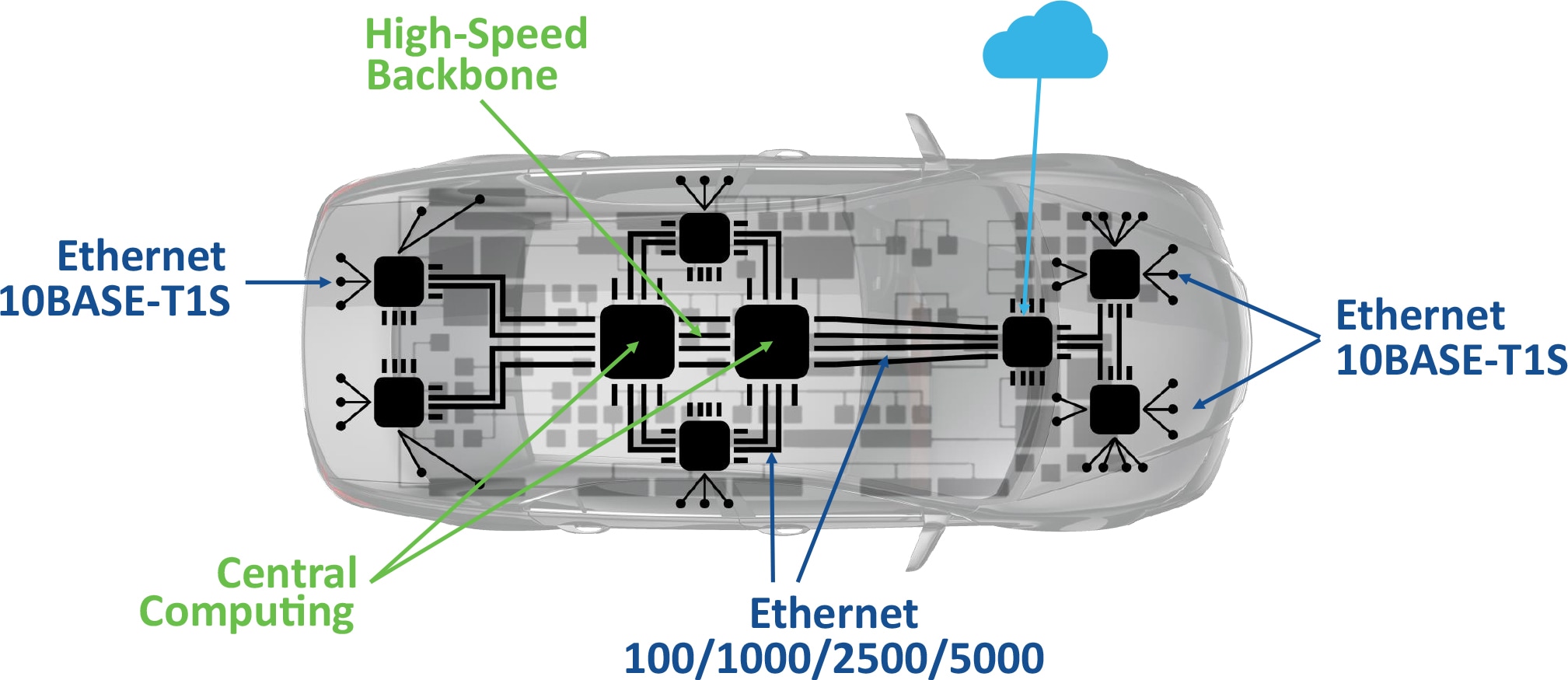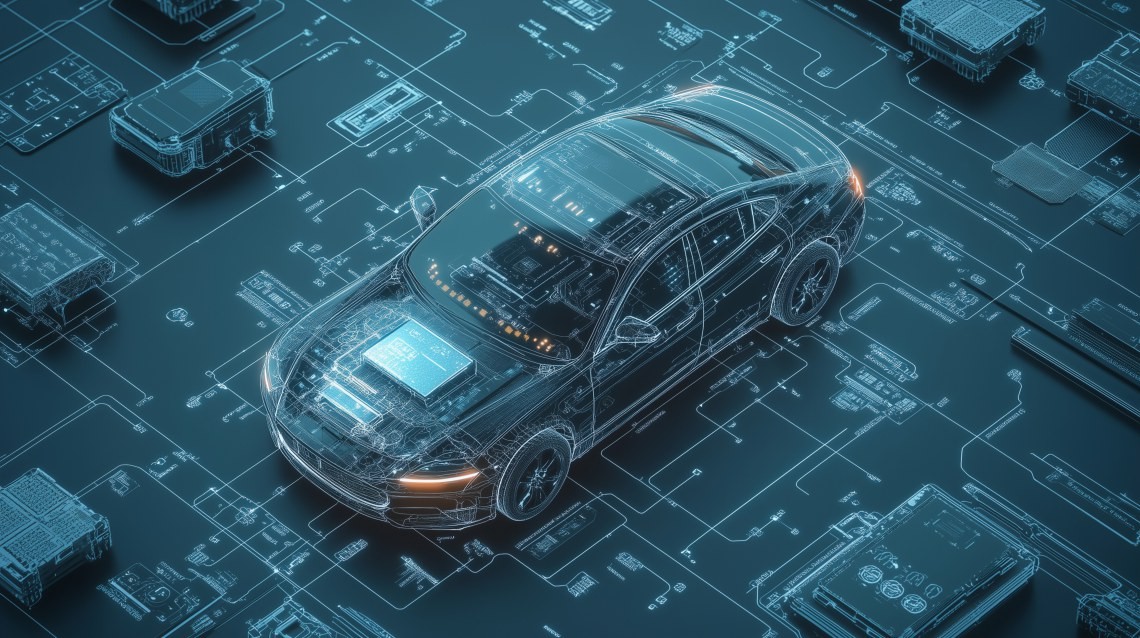Building an Effective Data Transport Ecosystem for Automotive Sensor Processing
Learn more about some of the key vehicle safety components of automotive network configurations.
Advancements in Vehicle Safety and Autonomy
Vehicle safety is a critical priority for car manufacturers as it directly impacts customer trust, brand reputation and compliance with regulatory standards. By designing safer vehicles, manufacturers can reduce the risk of accidents, injuries and fatalities, which helps build consumer confidence and loyalty. Additionally, advancements in safety technologies give manufacturers a competitive edge in the market. The transition from ADAS (levels 1 and 2) to full autonomy (levels 3 to 5) has the potential to make cars exponentially safer. Safety isn’t the only driver for ADAS—many long-haul logistics fleets are turning to autonomous trucks to reduce the cost of hauling food and goods.
Higher levels of autonomy require an increasing number and variety of sensors. Another factor is a revision in processing architectures, with processing no longer consolidated within a single compute element used to integrate data from each sensor. Instead, compute workloads are distributed across several compute cores or elements in one or more processors. This architecture is often within a central compute cluster, similar to that of a data center.
 |
Figure 1 – The car is becoming a data center on wheels, as it is having to process real-time a wealth of data from different sensor types.
Many of the big OEMs are already running this processing approach to enable even the lower levels of autonomy and use a multi-processor computing approach to enable Level 2 ADAS systems. Meanwhile, Waymo uses this approach in its level-4 robo-taxis, running a central CPU to enable a consistent high-level decision-making process based on a cohesive understanding of the world around it. Simultaneously, a separate architecture undertakes the pre-processing of data from sensor clusters to reduce the amount of raw data flowing to the CPU for sensor fusion.
With this approach, the volume of data transmitted for processing has increased significantly and even faster transmission standards are required.
Ethernet and CAN
Consider the major sensors used in Waymo’s robo-taxis. These vehicles integrate 29 cameras, six radar sensors and four LiDAR sensors. Then there’s the ultrasonic parking sensors in the bumper and the array of external audio receivers. The result is in excess of 1 Gigabit of data every second that needs to be transmitted and processed.
Ethernet is the standard for high-speed automotive communications with the IEEE 802.3bp specification. Typically it has been used in conjunction with the legacy lower-bandwidth CAN standard, which supports data for real-time control and diagnostic functions.
The 802.3bp specification adds point-to-point 1 Gb/s Physical Layer (PHY) specifications and management parameters for operation on a single twisted-pair copper cable in an automotive application. Several versions are available for automotive use. These include 1000BASE-T1, which provides bandwidth of up to 1 gigabit, and 10GBASE-T, its highest bandwidth version, capable of transmitting multiple gigabits per second over up to 15 m.
Feature |
CAN FD |
100BASE-T1 |
1000BASE-T1 |
10GBASE-T1 |
Bandwidth |
5 Mbps |
100 Mbps |
1 Gbps |
10 Gbps |
Cost |
Low |
Low |
Low |
Moderate |
Transmission Distance |
40 m |
15 m |
15 m |
15 m |
Table 1: A comparison of "legacy" automotive transmission standards CAN and Ethernet
The sheer volume of data that will need to be transmitted across advanced autonomous vehicle networks means Ethernet alone is no longer up to the task. So how do you support the high-performance computing, with multiple hosts running AI and machine learning inference models, that vehicle autonomy demands and at the latency required?
PCIe® and SerDes
Beyond Ethernet and CAN, there are two further key pillars of automotive networking: SerDes and PCI Express or PCIe®.
SerDes is used for low-latency point-to-point communications with SerDes interfaces converting parallel data from sensors into serial data, which is then transmitted at speeds up to and beyond 10 Gbps over a single lane before being converted back into parallel form for processing.
PCIe was first developed in 2003 to enable communication between consumer and enterprise peripheral devices. The PCIe standard is now in its sixth generation and forms the backbone of data center communications. The PCIe 6.0 standard delivers 8 GB per second of bandwidth per lane, with up to 16 lanes (128 GBps total). Each generation has doubled in bandwidth, with PCIe 5.0 allowing up to 64 GBps, which is enough for automotive applications, and the soon-to-launch PCIe 7.0 set to offer up to 256 GBps.
PCIe’s direct memory access (DMA) and support for high-speed storage interfaces also make it optimal for latency-sensitive applications where large volumes of data must be transferred between processors or from sensor interfaces to the central processing unit.
Feature |
10GBASE-T1 |
SerDes |
PCIe 4.0 (16 lanes) |
PCIe 5.0 (16 lanes) |
PCIe 6.0 (16 lanes) |
Bandwidth |
10 Gbps |
Up to 28 Gbps per lane |
32 GBps |
64 GBps |
128 GBps |
Cost |
Moderate |
Moderate to high |
Moderate to high |
High |
High |
Transmission Distance |
15 m |
1 meter |
0.5 m |
0.5 m |
0.5 m |
Table 2: Comparing Ethernet’s 10GBase-T1 with SerDes and PCIe’s latest three generations.
Note the use of gigabits per second for Ethernet / SerDes and gigabytes for PCIe (1 byte = 8 bits).
While there is no specific automotive grade PCIe variant (unlike Ethernet), this has not stopped PCIe adoption and the protocol has been implemented by a variety of automotive OEMs. As a result, silicon vendors have begun to develop PCIe switches that have been specifically designed to meet the challenging automotive environment. In 2022 our Switchtec™ technology, for instance, became the first PCIe switches to gain Gen 4 automotive-qualification.
A Hybrid Model is Needed
A modern vehicle will likely integrate somewhere in the region of 100 ECUs across the vehicle, to understand both the world around the vehicle and control the other functions from climate control to wipers and locks.
Most peripheral edge-processing systems have limited resources and access to updates; to better manage this data, a central compute cluster should be used. Data is transferred from the sensor with pre-processing before being sent to a powerful high performance computing (HPC) technology for sensor fusion. In this way, a modern vehicle can be thought of as a mobile data center, with the HPC at its heart.
If we take this analogy further, a data center likewise comprises servers and peripherals with a need to transfer huge amounts of data between these quickly. And PCIe, being present in today’s high-performance processors, is the ideal bus with which to create high-speed and low-latency connections. Its use in data centers means the protocol is also embedded into NVMe SSDs and a host of other components relevant to an autonomous vehicle.
But it should be noted that automotive designs are highly subject to SWaP-C (size, weight, power and cost) conditions and that means that while PCIe will enable the highest bandwidth, its higher cost (see table 2) means it should be used where it is most effective.
The sensors and processors should be linked together in the most effective automotive-qualified way. Data from Meta suggests 40% of the time that data resides in a data center is being transmitted rather than processed. This is power intensive and costly, but delays have few further issues. Networks in a vehicle moving at high speeds in close proximity to pedestrians, cyclists and oncoming traffic don’t have this luxury and the right protocol for the right job is needed to balance speed, bandwidth, reliability, power and cost—without creating latency through transmission bottlenecks.
There are almost as many AV network configurations that could be created as there are AV OEMs, however the starting point in the network design should be PCIe—used to connect the HPCs undertaking sensor fusion processing and creating the understanding of the world around the vehicle.
Depending on the level of pre-processing taking place in the edge processors as well as the number of sensors/outputted data, PCIe may also be needed to transmit from the edge, though, in many cases, SerDes is likely to provide enough bandwidth—especially when slightly higher transmission distances are required.
Both Ethernet and SerDes are capable of providing the bandwidth to transmit data from the sensor nodes to edge processors. If we look to the main intra-vehicle network, Ethernet will continue to serve as the backbone to connect multiple subsystems. And with its Time-Sensitive Networking (TSN), Ethernet ensures deterministic data transfer and provides guarantees on latency and synchronization.
Finally, CAN may have lower bandwidth, but this legacy system will still be ideal for sending actuator commands, including those relating to braking and steering. The protocol is proven and trusted by the automotive industry, and its simplicity ensures critical control loops operated with a high fault tolerance and with minimal delays.
 |
Figure 2 – With AVs becoming data centers on wheels with high performance computing at their heart, higher-speed interfaces become crucial to process all data without delays
Conclusion
The move to higher-level autonomous vehicle operation, especially levels 4 and 5, will have significant and positive consequences for road safety.
These vehicles will incorporate more sensors and create greater volumes of data that require specific processing architectures with transmission core to enable real-time analysis.
For more information please visit our ADAS web page.
